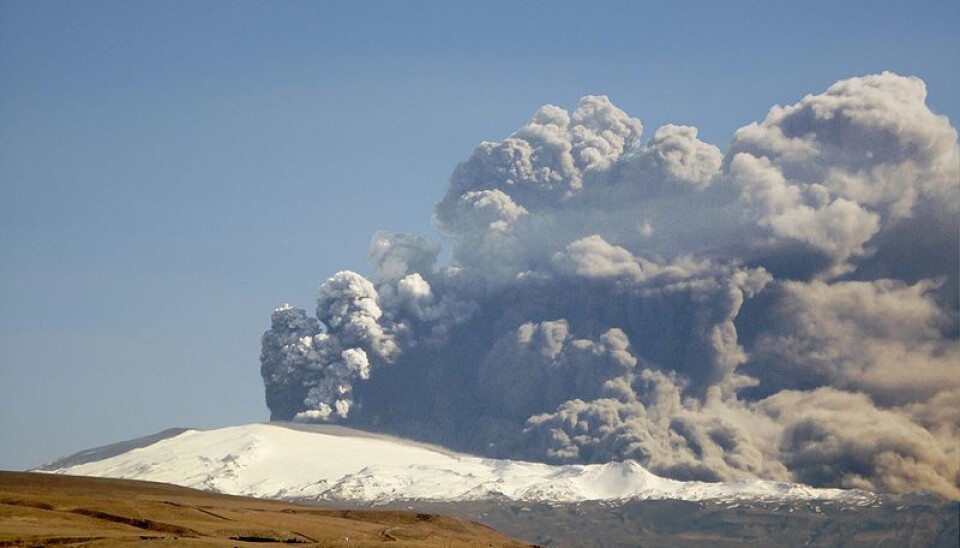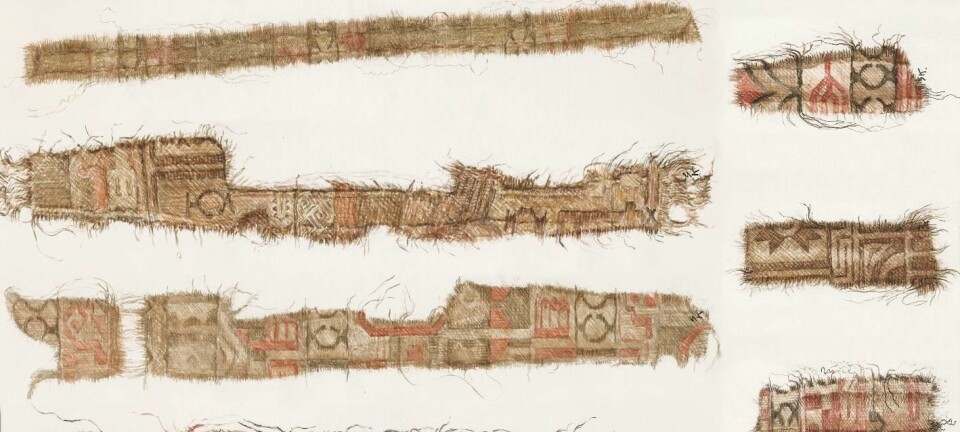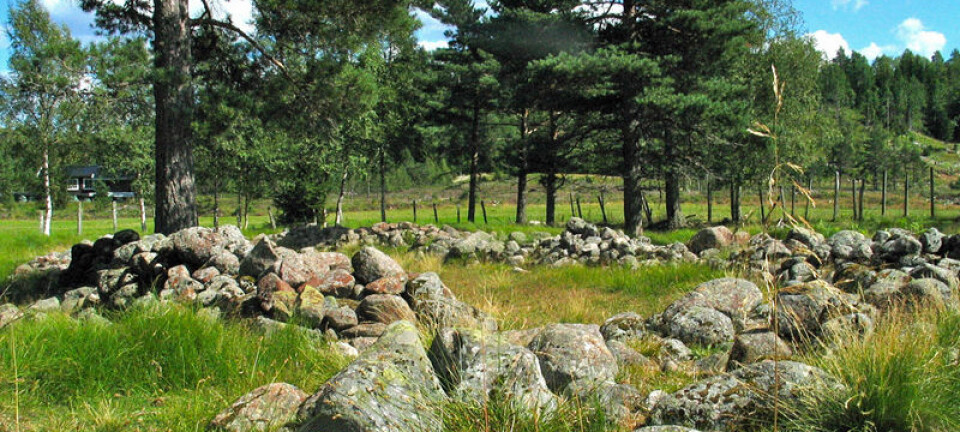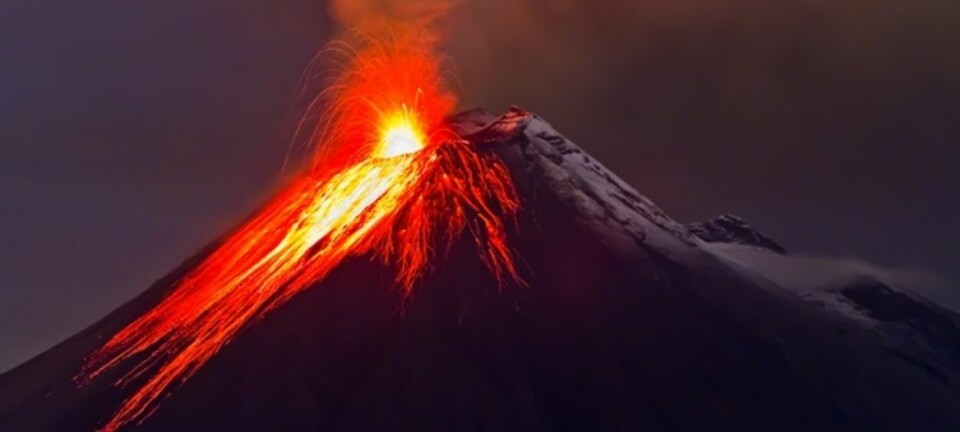
Were the Vikings scared of volcanoes?
New Danish research suggests that the Icelandic Vikings were far less relaxed about volcanoes than previously believed.
Imagine you are a Viking and you’ve just settled on a strange island, hoping to find happiness there. One day, when you are out wandering about your new country the ground starts to shake; deep, rumbling sounds from the core of the Earth drown out any other noise. Suddenly the top of the nearest mountain explodes and an inferno of glowing stones and ashes shoot out of the shattered mountaintop and plummet in all directions while columns of fire the height of the Empire State Building shoot out from the explosion.
Because you’re living hundreds of years prior to the emergence of science there is no natural explanation to what you just saw. What would you think? And what would you tell your friends?
Vikings had no idea what was going on
In the year 934 Iceland was struck by one of the greatest volcanic eruptions in the history of mankind. It happened just a few years after the Vikings colonised the island. As the Vikings originally came from areas without volcanoes they had no idea what was happening when the volcano erupted.
Yet volcanoes play a very small part in the Icelandic sagas -- even though they contain many descriptions of the lives and concerns of the Vikings. This seems strange to Mathias Nordvig, PhD at the Department of Scandinavian Languages and Literature at Aarhus University.
He points out that, on average, there’s a volcanic eruption somewhere on Iceland once every generation so the Vikings must have seen or heard about this terrifying natural phenomenon.
Many think that the Vikings were unfazed by volcanoes
On the basis of a single passage in one of the Icelandic sagas researchers have hitherto assumed that the Vikings had a relaxed, non-religious relationship with volcanic eruptions, perceiving them as natural phenomena that happened independently of the will of the gods or any divine intervention.
Nordvig now challenges this assumption in his PhD thesis on the attitude of the Icelandic Vikings towards volcanic eruptions.
“All other prehistoric cultures that lived side by side with volcanoes made up myths about volcanoes and believed them to have a sort of supernatural power,” says Nordvig. “It would be very odd if the Vikings were an exception to this.”
Other cultures perceived volcanoes as personal and supernatural
To illustrate how volcanic eruptions were perceived in the past, Nordvig goes through the myths that prevailed among different peoples. He says that what all the myths have in common is that volcanoes have both been personified and perceived as supernatural -- regardless where in the world they were located.
New Zealand:
The Maoris, the original inhabitants of New Zealand, describe in a myth how the eruption of the volcano Taranakis was caused by a love triangle riddled with jealousy. Taranaki, which the Maoris believed to be male fell in love with a female mountain but another male mountain nearby felt the same way as Taranaki about the female mountain and the two rivals got into a fight. The feud made Taranaki lose his cool and start to spew fire and lava.
Hawaii:
The volcano goddess Pele is a recurring figure in Hawaiian mythology. She is an evil and hot-headed woman who makes the mountains go berserk.
The Mediterranean:
In his poems ‘Metamorphoses’, the ancient poet Ovid portrays the eruption of the Italian Stromboli Volcano as the Titan Typhoeus, who is bound underground and breathes fire.
The Roman Empire:
The word ‘volcano’ stems from the fire god Vulcan from Roman mythology. He lived underground and sent his fire up through the mountains of Italy.
Fabricated myths to ensure survival
Nowadays these interpretations of what causes volcanic outbursts may seem a little creative and fanciful. However, Nordvig points out that when it came to understanding what was going on then the mountains started to explode around them the prehistoric people did not stand a chance.
He believes that the myths were the best way for these people to provide an explanation for the dramatic natural phenomena and warn others about the potential danger.
“We have to bear in mind that the volcanic eruptions could potentially wipe out entire communities. And that’s how they were perceived. The myths would’ve served to propagate knowledge that would increase the chances of survival in prehistoric societies,” he says.
Volcanoes hide in Norse mythology
Normally, historians and other researchers look to the Icelandic sagas for information about the Icelandic Vikings. But because there are practically no volcanoes in the sagas, Nordvig chose to turn to Norse mythology for clues. And clues he found.
“The tales in the Norse mythology contains a number of passages that in my opinion are descriptions of volcanic eruptions,” he says.
Ragnarok is a volcanic eruption
One of the most famous passages in Norse mythology is the description of Ragnarok in the poem Prophecy of the Völva. Ragnarok is Norse mythology’s tale about the end of the world.
Nordvig believes that several passages in the description of Ragnarok are actually symbolic of the different phases of volcanic eruption.
“The description of Ragnarok is one of the passages in Norse mythology where the volcano symbols are most apparent,” he says.
Nordvig goes through the different phases in the poem and the meaning he believes they hold:
-
The tree of life Yggdrasill shakes.
-
The dog Garm barks from its den at the top of the mountain.
- The Midgard Serpent makes the waves rise.
Nordvig interprets these events as follows:
-
Yggdrasill’s shaking means that the world is shaken to the core. This is the first omen.
-
The den from which the dog Garm barks represents a volcanic crater. Dogs have a superior sense of hearing and heightened senses compared to people so they would sense something big was going to happen before people would. Because of this, animals are often used for foreboding in myths.
- Earthquakes often result in tsunamis. And there are typically foreshocks prior to an earthquake. When the Midgard Serpent makes the waves rise, it’s most likely a description of this phenomenon.
According to Nordvig, the subsequent events in the poem are symbols of the eruption itself.
-
The ash-coloured eagle attacks people, screaming in anticipation.
-
The giants make noise from within the Earth and the dwarfs open their stone doors and howl from the doorways.
-
The fire giant Surt turns up with his fire swords and drags down the sun.
- The earth cracks and the sky is split in two.
Nordvig interprets these events as follows:
-
The eagle’s scream refers to the sounds of a volcanic eruption, which can actually sound like screams. The ash-coloured eagle’s attack on people symbolises the avalanche of ash and stone that is sent down the mountain during the eruption.
-
The howling of the dwarfs symbolises the point of the eruption when the sin is no longer visible due to the gases, sulphur dioxide and ashes that rise into the atmosphere.
- Some eruptions cause the ground to crack. The column of ashes from the eruption can project several kilometres into the sky, making it look like the sky was split in two.
It’s far-fetched
Professor of Nordic religion Jens Peter Schjødt, Aarhus University, certainly doesn’t agree with Nordvig’s interpretation of Ragnarok.
“I think it’s very far-fetched. The myth of Ragnarok is about the end of the world. It has exceedingly little to do with volcanoes, “ he says.
Why hide the message?
Schjødt is generally critical towards Nordvig’s cryptic approach to the texts, i.e. to look for the true meaning between the lines.
“Why would the myths really be about something it doesn’t say?” says Schjødt. “Myths about natural phenomena that we know from other peoples do not attempt to hide the real message. The myths lose their meaning if the people they are passed on to fail to understand them.”
Earthquakes described
To illustrate his point, Schjødt turns to a Norse myth about earthquakes.
The story is about Loki who’s tied up in a cave with a poisonous snake hanging from the ceiling above him spitting poison down towards his head. Loki’s wife catches the poison in a bowl before it touches him but every time she reaches for a new bowl a little of the poison reaches his face, making him shudder so much the earth quakes.
“Here the natural phenomenon described in the myth isn’t hidden. It says explicitly that it’s an earthquake. Why would it be any different with volcanic eruptions?” says Schjødt.
Volcanoes have just disappeared
It may seem that Schjødt doesn’t share Nordvig’s opinion that the Vikings were not unfazed by the volcanic eruptions. But that isn’t the case. He just thinks there’s a simple explanation why the myths and sagas have no descriptions of volcanic eruptions worth mentioning.
“We must remember that only a minority of the myths have survived. Most likely many of the myths that were never passed on were about volcanoes,” says Schjødt.
All myths blur/cover up the content
Nordvig doesn’t think that Schjødt’s arguments are watertight. In his opinion, interpreting the myth about Loki and the poisonous snake to be about earthquakes is a post-rationalisation. In other words, that conclusion was also reached by taking a mythological approach -- that was already done in medieval times.
“In the myth itself it only says that the earth quakes when the poison hits Loki. But the conclusion that this was a description of an earthquake was made by the medieval writer,” says Nordvig.
Furthermore, Nordvig rejects the argument that the descriptions of natural phenomena in prehistoric myths were always explicit.
“The fact that some prehistoric myths were really about natural phenomena is always a post-rationalisation to some extent. In the myth from New Zealand about the Taranaki Mountain it doesn’t literally say that what is described is the natural phenomenon of a volcanic eruption. The same goes for the Roman myth about Vulcan,” he says.
We can now understand the Vikings’ perception of volcanic eruptions
Even though Nordvig can’t prove his theories definitively, he is, in his own words, exactly as certain about them as any researcher in the humanities ever could be. He believes his research makes way for a new understanding of the relationship the Icelandic Vikings had with nature.
“If I’m right that the Norse myths contain concrete evidence of volcanic eruptions we have the opportunity to achieve a deeper understanding of the way the Vikings interpreted natural phenomena,” says Nordvig. “That would be incredibly interesting.”
Translated by: Iben Gøtzsche Thiele











